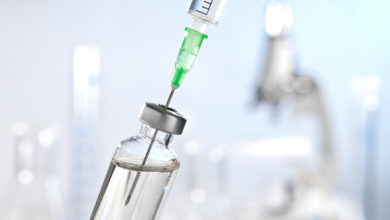Distressed Diagnostic Labs

A look into the burdened COVID-19 testing labs and how they work against time to fulfil mounting demand
Diagnostic laboratories are facing unprecedented challenges to help fight the COVID pandemic on one hand and the other sustaining themselves financially due to the price cap by the government. Big players have however somehow succeeded with many adopting technology as a means to survive.
Before travelling to my native place from Mumbai in April 2021, I came to know from certain government websites, airline portals and certain apps that one has to undergo compulsory RT-PCR test with a handy negative report to travel. I was caught unaware of how bad the situation was on the ground when my family reached the door of a private laboratory to undergo the RT PCR test. I was shocked to see a huge number of people in the queue having COVID like symptoms on one hand and others trying to leave the city as the lockdown deadline was nearing. The situation was so bad that upon enquiring I was told that many people were standing in the queue since morning only to have their samples taken by late afternoon. With a raging second wave of COVID, the staff seemed helpless, overburdened and in chaos.
Pandemic Impact
After the first wave of the pandemic, many were caught unaware of the second wave which resulted in a catastrophic situation. Overburdened diagnostics labs, staff shortage, lockdown protocols all lead to delay in handing over the reports which resulted in late medication for COVID positive patients and ultimately deaths for many. (As on May 1, 2021, India reported 3,92,603 new COVID-19 cases and 3,673 deaths till 11.15 p.m )
To mitigate the crisis, laboratories across India undertook certain measures. Maintaining the safety of staff, running the labs during the pandemic were all looked upon by the management so that people were less inconvenienced.
Kolkata-based Suraksha Diagnostics, like many other labs, faced fewer walk-in patients on one hand during the
pandemic and subsequent lockdown while on the other the labs were overburdened with the challenge of testing the samples in huge numbers.

Dr Abhik Banerjee, Chief of Quality, Senior Consultant- Pathology, Nodal Officer, COVID 19 Cell, Suraksha Diagnostics says, “Several areas of diagnostic healthcare have been impacted due to this pandemic. One has to maintain the usual lab and centre operation, the emergency services as far as possible despite the threat to
the safety of customers and its staff. Secondly, the financial impact was huge given the drastic reduction in revenue generated from routine test segments and thirdly has been a shift in the overall environment of the laboratories due to the increased demand for COVID-19 testing.”
Challenges Galore
Sharing similar challenges, Dr Harish Pillai, CEO – Aster India, Aster DM Healthcare, says that there was a
challenge to collect samples and provide reports on time along with ensuring service standards were maintained.
Dr Pillai adds, “The unavailability of manpower due to quarantine measures, burn out of home collection services, surge in the prices of PPE material, increased lead time for delivery of diagnostic equipment from two to three weeks in normalcy changed to seven to eight week time, the unavailability of consumables like sodium citrate tubes, delays in imported kits due to global lockdown, etc. were some of the other
challenges faced.”

However, according to him, processes were altered to tackle the unprecedented load and besides a fully equipped pathology reference laboratory, a team of highly trained lab technicians followed all requisite processes to not only manage the load but ensured the quality of services provided.
Dr Kamlesh Kumar Patel, Director of Rajasthan-based Livepath Diagnostic Laboratory shared similar views of the overburdened system which arose due to the unprecedented situation. Dr Patel opines, “Keeping the price of the test affordable while maintaining quality standards was extremely challenging.”

The private diagnostics sector played a crucial role in expanding and strengthening the testing capacity to meet the recurring surge. Cost pressure is another major challenge being faced by the diagnostics labs.
Dinesh Chauhan, CEO, CORE Diagnostics opines that there is still an existing challenge for certified labs to conduct tests at the set price given the rise in the cost of consumables and supply chain shortages. Furthermore, with prepayments becoming a norm for suppliers and deferred payments from hospitals (both private and
government), there is indeed a cost pressure for diagnostic companies. So what has become the new norm for
the diagnostic labs to overcome the above-mentioned challenges? It may be noted that smaller labs ceased to exist in many places and bigger labs could afford to tweak their strategies to somehow manage to sustain themselves.

The New Norm
Many pathologists are working remotely through digital pathology solutions to avoid challenges related to physically being in the labs/hospitals. According to Chauhan from Core Diagnostics, “To access the best
pathologists globally, we have been scanning and getting slides reviewed wherever needed. Another significant
change we saw was the adoption of home collection. The surging panic and need for stabilisation helped the
industry to re-focus on the importance of the home collection. Furthermore, early detection and accurate diagnostics are important for labs as screening becomes the new normal.”
Suraksha Diagnostics has been able to reestablish the importance of laboratory medicine specialists. According to Dr Banerjee, the footprint is surely going to stay forever. The development of new molecular biology setups and scaling up of existing infrastructure, have been noticed at a pace that was never imagined before. The customer relationship management team has observed a dramatic increase in phone calls requesting for home collection and inquiring about the availability of tests like CRP, D-DIMER, IL6 etc.
In addition, 24/7 operations have become the new norm adopted by Mapmygenome. Says Anu Acharya,
CEO, Mapmygenome, “Mapping the workflows into our secure laboratory information management system has
been the norm since the company’s incubation stage.”

The Tech Push
The world has witnessed phenomenal technological innovation in the healthcare space and diagnostics labs
have been able to utilise the right opportunity to evolve in this space. Automation in healthcare has helped
diagnostics labs mitigate the crisis to a certain extent.
Aster DM Healthcare adopted highend technological options by the molecular department, with lesser TAT
like the Abbot Id & Genexpert. Mobile applications for quick bookings of the service by the patients were introduced which also enabled them to track the report status. Even automation in admin workflow helped Aster DM Healthcare overcome the challenge somewhat. While the diagnostic industry was already on the verge of technological advancements, the crisis accelerated the pace. Right from booking tests, sample
collection, to reporting- everything is now fully automated.
CORE Diagnostics not only started pathologists were examining the day-to-day slides while physically being in
the lab. Chauhan says, “Data has always been of utmost importance to us ever since we started, and we have state-of-the-art security for storing samples after analysing them. Shortly, we intend to set up an R&D facility that will solely focus on bringing low-cost, reliable, and easy-to-use in-house testing kits.”
MapmyGenome’s Viral Transport Medium ensured that there is no lab contamination – and any virus in COVID
samples is killed in CoviSafe kits, while its genetic structure remains intact for testing purposes. The entire workflow is mapped into secure LIMS.
R&D in Full Force
Many labs have taken up new and innovative test methods. With the pandemic raging across the country,
Mapmygenome’s R&D team turned its focus on developing two tests — an RTPCR-based diagnostic test for COVID-19 and a predictive genomics solution Genomepatri Immunity. The combined teamwork of Mapmygenome employees helped to develop the COVID testing workflow and to gain NABL and ICMR
approvals.
In September, Mapmygenome built a second ICMR approved lab at GMR Hyderabad International Airport to
help screen both departing and arriving passengers. The company added several blood tests to help understand
antibodies and other COVID-related parameters. It has also been involved in seroprevalence studies with RT PCR, antibodies, T cell markers etc.
The future
The year 2020 was a hectic year for diagnostic labs with staff and management on the tenterhooks as with
rising cases a large number of samples were required to be analysed within a short period. With COVID-19 showing no signs of abatement and subsequent waves coming back, diagnostic labs have been able to gauge the right sentiments.
Acharya opines, “The pandemic has increased people’s awareness towards preventive healthcare. Predictive testing is rapidly seeing more takers. For healthcare providers and their customers, now is the best time to
shift to a personalised, predictive, preventive, and participatory model.”
Patel foresees a lot of growth in the online healthcare space. During the pandemic, Livepath Laboratory has
identified the need and growth potential of online healthcare facilities and launched an online medical aggregator
platform.
Dr Banerjee is optimistic about the future of diagnostic labs and predicts a definite increase in predictive health
check-up in the coming days. “No doubt, the laboratory industry is better prepared now to handle challenges and
days are going to be brighter than ever before,” he opines.
As predicted that COVID-19 is here to stay forever with waves coming in at different times, diagnostics labs will
be under tremendous pressure till new strategies are adopted. For big laboratories implementing the right
strategies will work in favour of them but for smaller labs, it will be a tough road ahead to sustain. Only time will
say what the future beholds.




